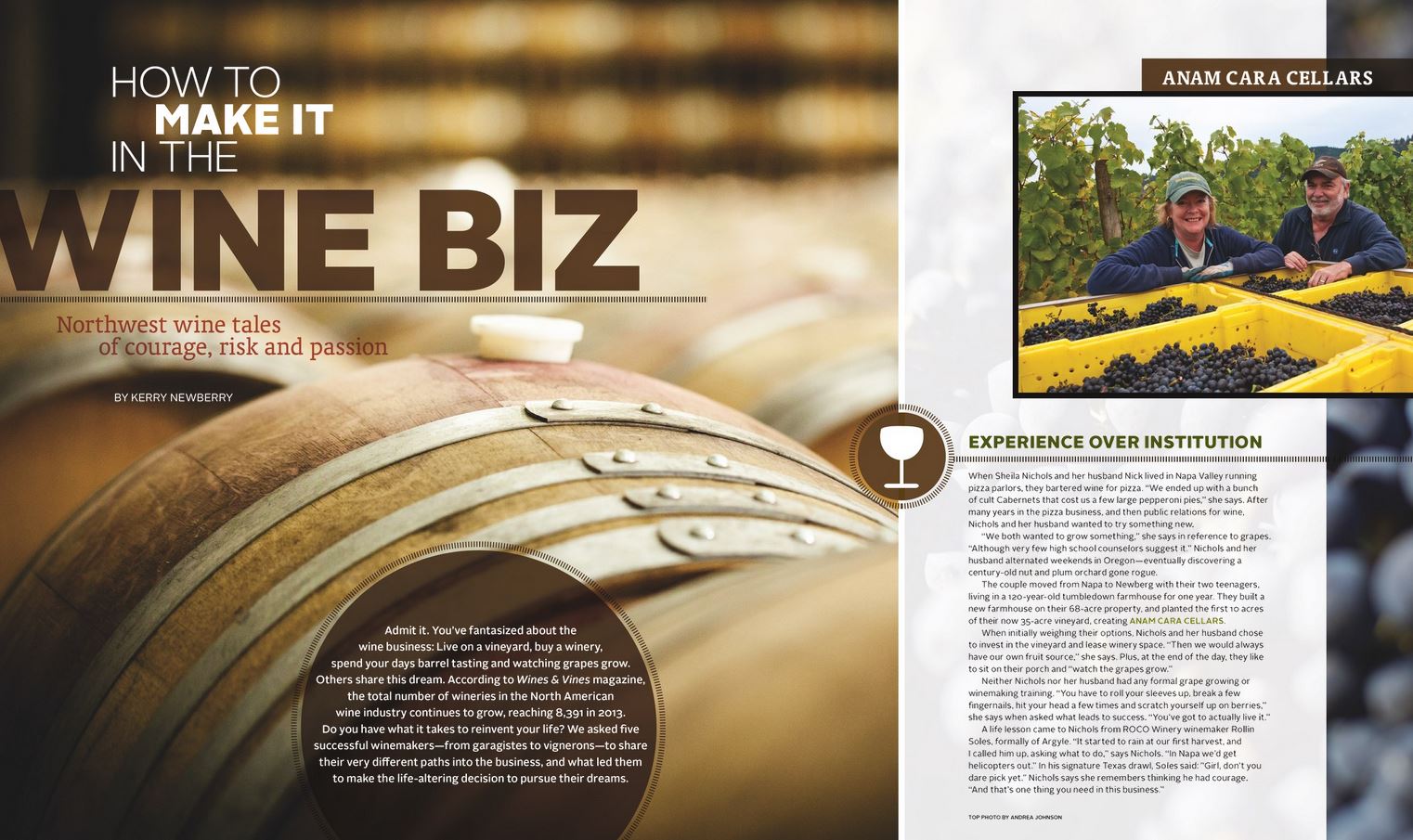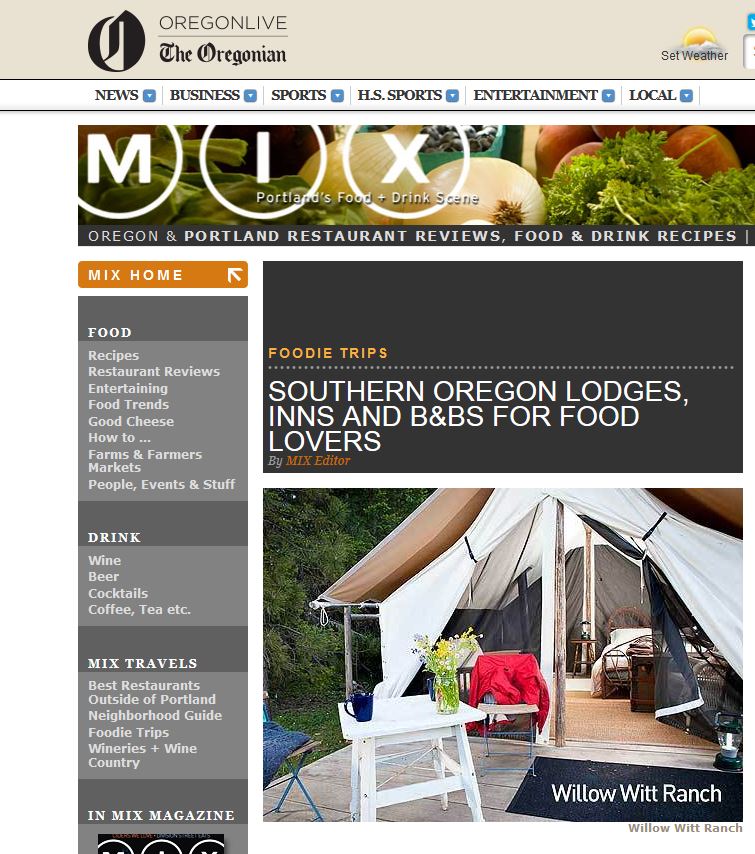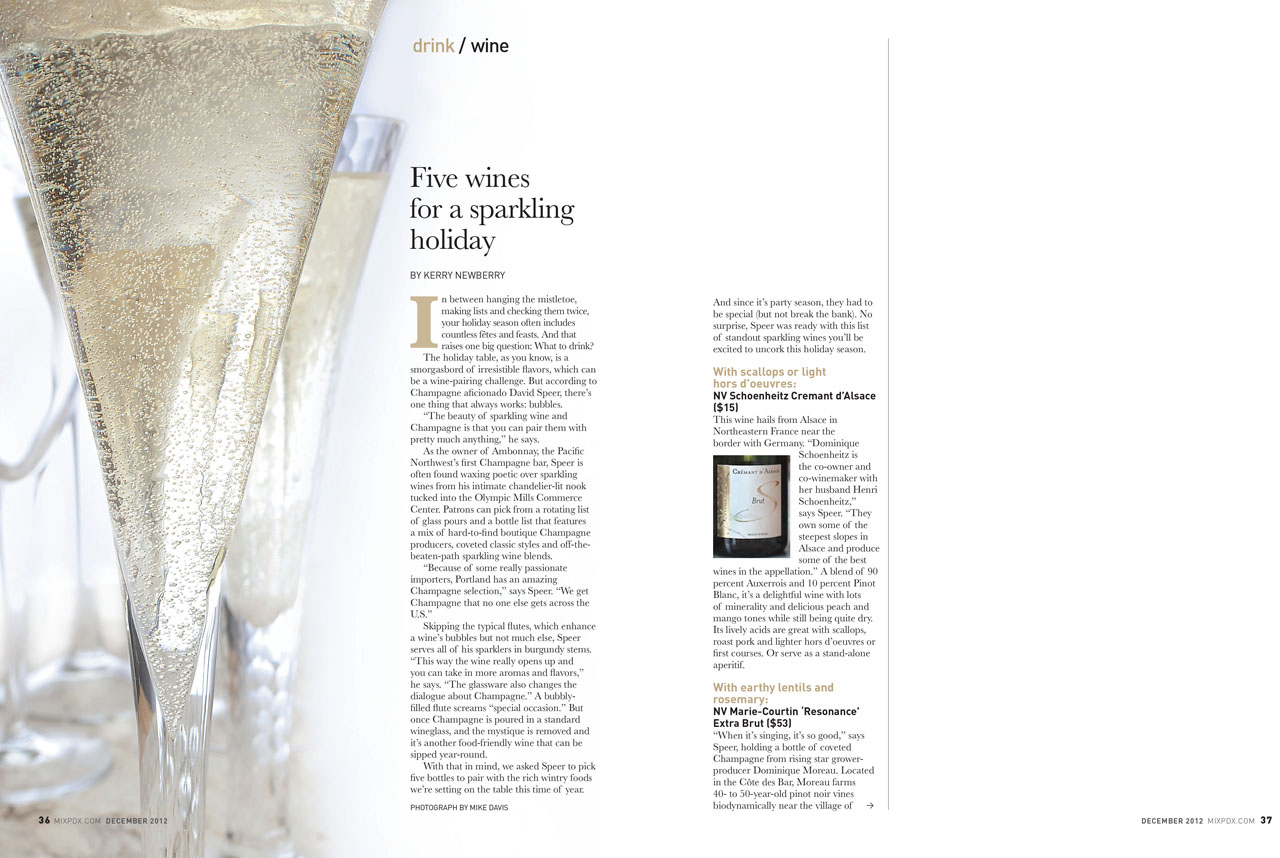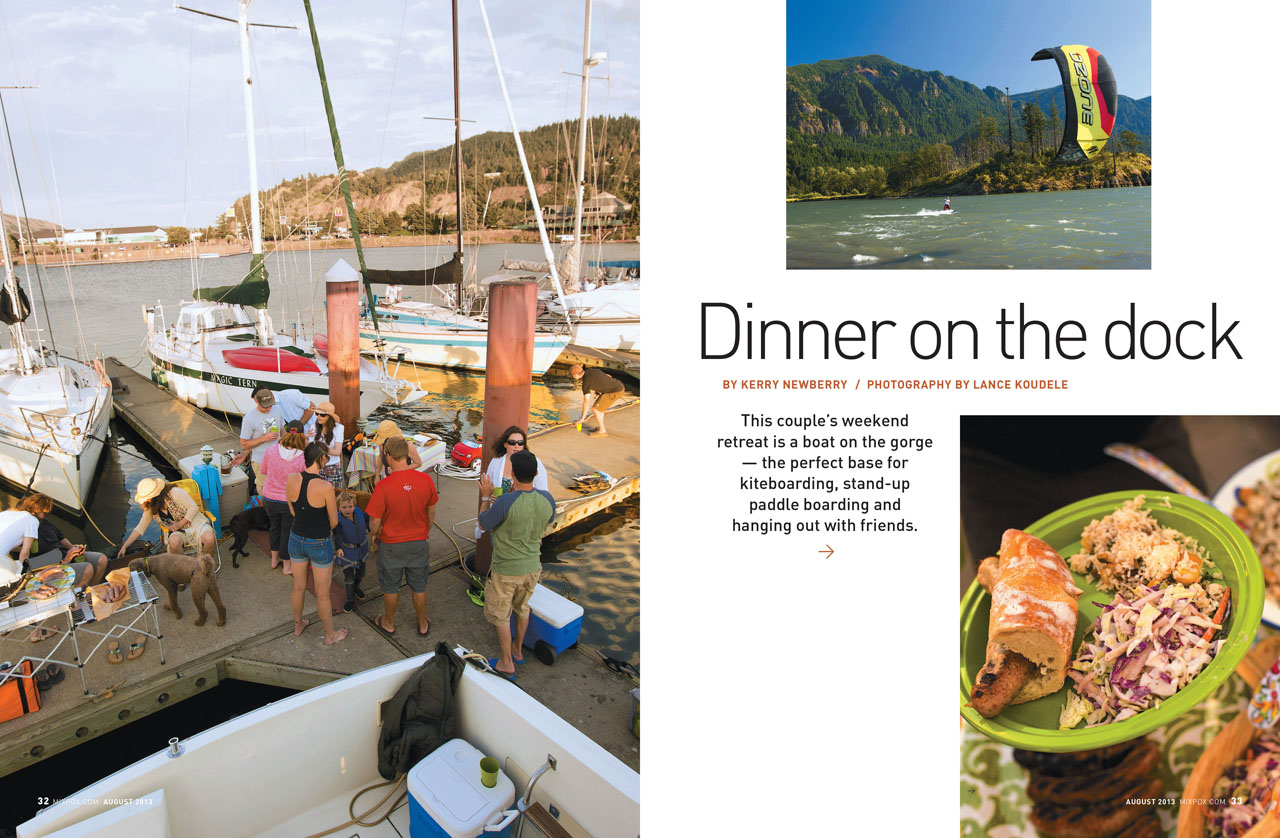How to Make it in the Wine Biz

Northwest Wine Tales of Courage, Risk, and Passion
Admit it. You’ve fantasized about the wine business: Live on a vineyard, buy a winery, spend your days barrel tasting and watching grapes grow. Others share this dream. According to Wines & Wines magazine, the total number of wineries in the North American wine industry continues to grow, reaching 8,391 in 2013. Do you have what it takes to reinvent your life? We asked five successful winemakers—from garagistes to vignerons—to share their very different paths into the business, and what led them to make the life-altering decision to pursue their dreams.
EXPERIENCE OVER INSTITUTION
When Sheila Nichols and her husbandNicklived in Napa Valley running pizza parlors, they bartered wine for pizza. “We ended up with a bunch of cult Cabernets that cost us afew large pepperoni pies,” she says. After many years in the pizza business, and then public relations for wine, Nichols and her husband wanted to try something new.
“We both wanted to grow something,” she says in reference to grapes.“Although very few high school counselors suggest it.” Nichols and her husband alternated weekends in Oregon—eventually discovering a century-old walnut and plum orchard gone rogue. The couple moved from Napa to Newberg with their two teenagers, living in a 120-year old tumble down farmhouse for one year. They built a new farmhouse on their 68-acre property, and planted the first 10acres of their now 35-acre vineyard, creating Anam Cara Cellars.
When initially weighing their options, Nichols and her husband chose to invest in the vineyard and lease winery space. “Then we would always have our own fruit source,”she says. Plus, at the end of the day, they like to sit on their porch and “watch the grapes grow.” Neither Nichols nor her husband had any formal grape growing or winemaking training. “You have to roll your sleeves up, break a few fingernails, hit your head a few times and scratch yourself up on berries,” she says when asked what leads to success. “You’ve got to actually live it.”
A life lesson came to Nichols from winemaker Rollin Soles, of ROCO winery, and formally Argyle. “It started to rain atour first harvest,and I called him up, asking what to do,” says Nichols.“In Napa we’d get helicopters out.” In his signature Texas drawl, Soles said: Girl, don’t you dare pick yet. “I remember thinking he’s got courage,” says Nichols. “And that’s one thing you need in this business.”
FROM GARAGE TO GREAT HEIGHTS
A sense of adventure comes in handy in the wine world—a spirit Mark McNeilly of Mark Ryan Wineryin Woodinville, Wash., knows well. While working in wine sales for Unique Wine Company in 1999, McNeilly began making small batches of wine on the side, sourcing grapes from the esteemed Ciel du Cheval and Klipsun vineyards. His day job in wine sales providedan avenue to meet and build strategic relationships with winemakers and grape growers. At the time, he was living in a downtown Seattle high-rise, so the first place he made wine was in a good friend’s garage in Greenwood.
“I made eight barrels of wine there,” says McNeilly, “then he kicked me out.” Next, he took over his parents’ garage, until they also kicked him out. McNeilly then landed in a warehouse in Kent. He couldn’t pay for both the Seattle apartment and his warehouse, so he moved into his warehouse for 12 months, where he lived amongst his barrels. “It was a sacrifice I had to make,” he says, laughing over his drive-in living room. Largely self-taught, McNeilly grew his business over the past decade into one of the top wineries in the state of Washington.
In 2011, wine writer Paul Gregutt called him the “acknowledged godfather of the burgeoning Woodinville wine scene.” He contracts all of his fruit from existing vineyards, where he has longstanding relationships. In the past five years, he’s worked to develop vineyard blocks specifically for Mark Ryan Winery, partnering with the vineyard owners, and offering very long-term contracts. “I did this with reading a lot of books and asking a lot of questions,” he says, of his trajectory into wine.
“Now there are some great winemaking schools in our state, so I think a great first step for anyone starting out is to get a good education in winemaking.” Additionally, McNeilly suggests an in-depth understanding of how important the sales and marketing side is to starting a new label. “You are not only competing with Northwest wineries,” he says. “I think having a broad knowledge of wine, and understanding where your label fits into the world-wide spectrum of labels and brands is essential.”
SIMILKAMEEN SERENDIPITY
When John and Virginia Weber of Orofino Vineyardsfirst moved to Similkameen Valleyin 2001, it was an unknown spot on the map. Now, it’s touted as A hidden gem of British Columbia. The couple grew up in Saskatchewan, and after years traveling and working around the world, ended up back home in their respective careers, teaching and nursing.
“We had reached a point where we had to decide, “says Weber, “is this what we are going to do?” Virginia began studying horticulture, with the tentative plan to buy a greenhouse business. “We knew we wanted to farm,” says Weber. “And we knew we wanted to run a business together.” One morning, while flipping through the newspaper, they read an ad for a vineyard for sale in the Okanagan. The same owner had a property for sale in the SimilkameenValley, with more vineyard acreage and a smaller home.
The next week, they drove through the night to see the property. “Coming from Saskatchewan where it’s flat and very prairie-ish, you get into this valley and it’s quite exotic,” says Weber. There was a cherry tree in the yard, five almond trees and apples, and peaches and nectarines. “All these things that prairies don’t have,” says Weber. The couple put an offer in that weekend. It was accepted. “We quit our jobs and moved,” says Weber. “We had no experience. Never even sat on a tractor before.”At the time they moved to the area, there were only three wineries in the valley. “It’s been called a bit of a frontier,” says Weber.
But they made it through the first year of growing grapes, contracting and selling all of their fruit in 2001 and 2002, while gaining an understanding of their land. In 2003, Weber made his first wine at a neighboring facility. During this time, the couple was also taking classes in winemaking and viticulture at Okanagan University College. In 2004 the couple built a winery (Canada’s first and only strawbale winery).
A tasting room followed in 2005 with a total production that year of 550 cases. The winery grew slowly and deliberately. Last year, Orofino produced approximately 5,000 cases of wine. When asked what advice he’d give to aspiring winemakers, Weber replies: “Know what you’ve got that other people don’t.” Weber and Virginia can’t imagine living anywhere but the Similkameen. “In the end, it’s all about taking a chance,” says Weber.
THE SCIENCE OF WINE
A significant birthday prompted Earl Sullivan and his wife, Carrie of Idaho’s Telaya Wine Co.to pursue winemaking. The couple was on the beach in Cabo, on the verge of turning 40, and contemplating what they could do next. “We wanted to do something that we were really passionate about,”says Sullivan. Both are scientists, so the chemistry of wine was enticing, as was the culture and experience of sharing wine with food and friends.
“It was something that we could actually understand and dig into and become very familiar with because of our backgrounds in science,” says Sullivan. Another aspect was time with their children. Both Sullivan and his wife were consumed bytime-intensive, demanding careers. The wine business is also demanding, but Sullivan saw it as an opportunity to teach their children about agriculture, science, and the kind of work ethic he learned as a child growing up on a farm in Kentucky. “We wanted the time spent with our children to be meaningful,”he says.
The couple began making wine in Washington with friends who were willing to lend space in a facility, and teach them techniques and processes. After their first commercial vintage in 2009, made with Columbia Valley fruit, they came to a crossroads. Stay in Idaho, or move to Washington? “We decide to take the risk in Idaho,” says Sullivan. “Based on research we were doing, we saw the opportunity in the Idaho industry as significantly greater for us long-term,” says Sullivan. “We are on the forefront of what’s hopefully going to be an explosion in the Idaho wine industry over the next ten years,” he says, “similar to what happened in Washington ten years ago.”
When asked for advice to aspiring winemakers, Sullivan speaks to the importance of balance. “I’m also a winemaker with my wife,” he says,“which has other costs associated with it.” The couple talksaboutwork constantly. “We never get to leave the business,”he says.And so they’ve had to make important decisions around when to hiremore staff (sooner than anticipated) in order to maintain a work-life balance. In 2011, the couple moved into a winery facility in Garden City; and in 2012, made wine with their first Idaho fruit.“It’sended up being the perfect culmination of all the things we wanted,” says Sullivan.
Sip Magazine | Summer 2014





